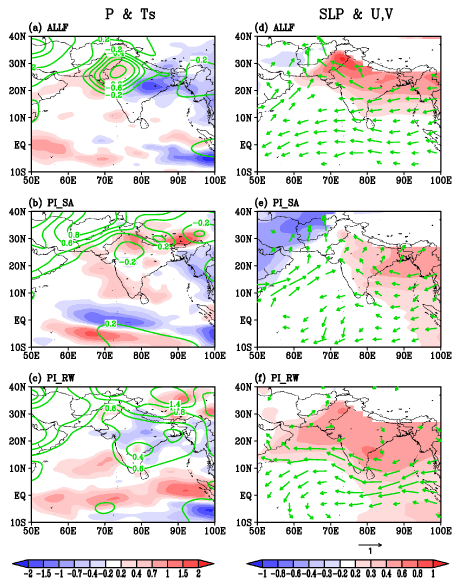May 7th, 2014
Key Findings
- While predominant precipitation changes over India are associated with local aerosols, remote aerosols contribute to an earlier monsoon onset in June, and enhance summertime rainfall over the northwestern regions.
- Temperature and near-surface circulation changes over South Asia are more effectively driven by remote aerosols.
- This study highlights the role of circulation changes, which contribute to extending the aerosol impact beyond the individual source region.
Massimo A. Bollasina, Yi Ming, V. Ramaswamy, M. Daniel Schwarzkopf, and Vaishali Naik. Journal: Geophysical Research Letters. DOI: 10.1002/2013GL058183
Summary
The impact of the late 20th century changes of anthropogenic aerosols from local (i.e., South Asia) and remote (i.e., outside South Asia) sources on the South Asian summer monsoon is a rather unexplored topic. It has important implications for strategies to control regional pollution and understand its effect in climate. GFDL scientists investigated the impact of this change in aerosols on the South Asian monsoon. This work provides new insights into the pathway by which global anthropogenic aerosols affect long-term variations of the monsoon hydroclimate, which is still uncertain and largely debated in the scientific community.
The observed summertime drying over India is replaced by widespread moistening once local aerosol emissions are kept at pre-industrial levels while all the other forcings evolve. Constant remote aerosol emissions partially suppress the precipitation decrease. While predominant precipitation changes over India are thus associated with local aerosols, remote aerosols contribute as well, especially in favoring an earlier monsoon onset in June and enhancing summertime rainfall over the northwestern regions.
Unlike precipitation, temperature and near-surface circulation changes over South Asia are more effectively driven by remote aerosols. These changes are reflected into northward cross-equatorial anomalies in the atmospheric energy transport induced by both local and, to a greater extent, remote aerosols.
These results highlight the importance of remote aerosols for regional climate change over South Asia. Additionally, this study underlines the complex interactions between local and remote aerosols and their different dominance on South Asian climate. Finally, the study highlights the role of circulation changes, which contribute to extending the aerosol impact beyond the individual source region.



